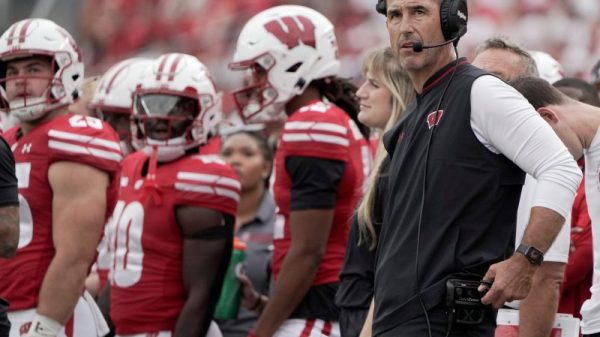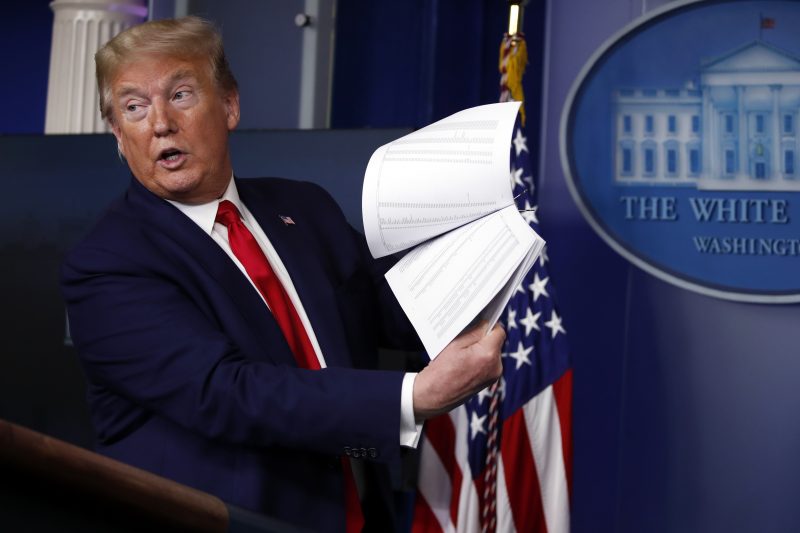We have reached one of those points in reporting on Donald Trump’s post-presidency retention of documents when it’s useful to take a step back.
On Thursday, The Washington Post teased out another aspect of this complicated situation. According to people familiar with the investigation, the government has evidence that Trump’s team practiced moving documents he took from the White House — the implication being that they rehearsed hiding them. Then, shortly before inviting the Justice Department to come pick up a cache of documents, the Trump employees apparently put that practice to use.
This has been the subtext to the investigation from the outset: Trump had things he wanted to keep despite not being authorized to do so. The timeline of events, delineated below, reinforces that idea.
The question, then, is why. What use did they serve?
In recent weeks, we’ve gotten more insight in that regard, as well. Consider Trump’s response when asked at CNN’s town hall event earlier this month whether he showed documents marked as classified to anyone after leaving the White House.
“Not really,” he said, insisting (falsely) that he had the right to do so anyway. When pressed on it, he reeled his response back a bit: “Not — not that I can think of.”
“Prosecutors separately have been told by more than one witness that Trump at times kept classified documents out in the open in his Florida office, where others could see them, people familiar with the matter said,” The Post reported this week, “and sometimes showed them to people, including aides and visitors.”
Since news first emerged of the FBI’s search of Trump’s Mar-a-Lago home, the nature of that place has been a complicating factor. It’s not simply that Trump took presidential records from the White House to his home or even that some of those documents were marked as classified. It’s that he took them to a facility where he hosts paying customers, political supplicants and publicly accessible events.
The idea that Trump sought to retain those documents despite requests from the National Archives and Records Administration (NARA) is reinforced by The Post’s report about boxes being moved before the Justice Department’s first visit. But the full timeline below, building in part on a Washington Post timeline compiled by Rosalind S. Helderman, makes that intent harder to ignore.
Jan. 20, 2021. Trump leaves the White House, bringing a number of boxes containing documents and other material with him to his home at Mar-a-Lago. Some of the documents he kept there were marked as classified.
May 6. Realizing that documents are missing, NARA contacts Trump about obtaining them.
Jan. 18, 2022. After being prodded repeatedly, Trump’s team in late December informs NARA that it has documents to return. After being packed with Trump’s personal oversight, they are shipped from Florida to Washington, where NARA discovers that the material includes a number of documents marked as classified.
Early February. Trump asks an attorney to tell NARA that all of the requested material has been returned. The attorney, not knowing if this is true, declines to do so.
Feb. 9. NARA sends a referral to the Justice Department centered on concerns that Trump has been in possession of that material, that some of it has been mixed in with other records, and that some documents have been torn up.
April. NARA informs Trump that it will turn over the material to the FBI following a Justice Department request. Trump’s attorneys object, claiming executive privilege. NARA rejects that idea, and the material is turned over to the FBI in May.
May. At some point in April or early May, Trump and aides reportedly practice moving material that he didn’t want to turn over.
May 11. Trump’s team is served with a subpoena for “any and all documents or writings in the custody or control of Donald J. Trump and/or the Office of Donald J. Trump bearing classification markings” — notably, not just documents that were actually classified.
June 2. Trump aide Walt Nauta and another Mar-a-Lago employee reportedly move a number of boxes of papers into a storage area at Mar-a-Lago.
That evening, a lawyer contacts the Justice Department and invites officials to come pick up documents responsive to the subpoena.
June 3. Jay Bratt and several FBI agents arrive at Mar-a-Lago to collect the material. They are given a single envelope containing 38 documents. Trump attorney Christina Bobb signs an affidavit asserting, “Any and all responsive documents accompany this certification.”
While there, Bratt views the storage room. Attorneys for Trump reportedly prevent his team from looking in any of the boxes there.
Nauta later helps load an SUV in which Trump would depart for Bedminster, N.J.
June 8. Bratt emails Trump’s lawyers and asks that the storage room be secured and that the material in it not be disturbed.
June 24. The Trump Organization receives a subpoena for footage from security cameras at Mar-a-Lago beginning in January. This footage reportedly includes images showing Nauta moving boxes — but it also contains unexplained gaps.
Aug. 8. FBI agents arrive at Mar-a-Lago to execute a search warrant. They retrieve a number of boxes, including material with classification markings, both from the storage room and from Trump’s office. Some of the documents found in the office — many marked with high levels of classification — are separated into a leather-bound box.
November. Attorneys working for Trump search Bedminster, Trump Tower in New York and a storage unit in Florida. Several documents with classification markings are found at the latter location.
Trump attorney and ally Boris Epshteyn had reportedly tried to block the search at Bedminster.
There are a number of legal questions raised here, of course, ones being adjudicated by special counsel Jack Smith.
There is also a political question — about Trump’s apparent interest in again subverting governmental boundaries to satisfy his own interests. Independent of Smith’s determinations, that question deserves to be considered.



























